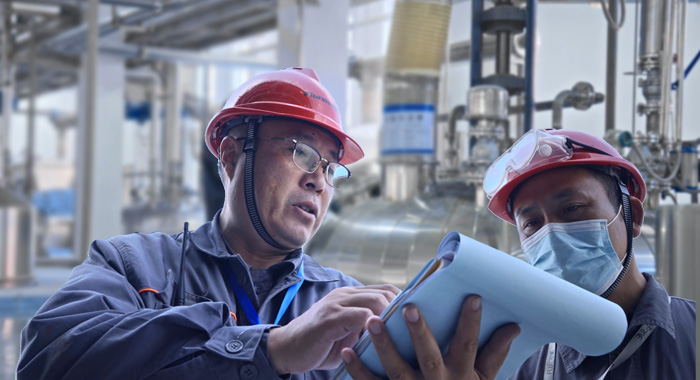PVDF Lithium Battery Grade
FLUORINE Products
PVDF Lithium Battery Grade

- Related Products
- Product Features
- Applications
- FAQ
| Image | PVDF Lithium Battery Grade | Model | Description |
|---|---|---|---|
 | Zheflon®FL2100 PVDF—Power Lithium Battery Grade -Leading Manufacturer of PVDF Resin | FL2100 | Zheflon®FL2100 is suitable for applications in medium-to-high nickel NCM systems, such as 523, 622, 8-series and 9-series in the electric vehicle industry. |
 | Zheflon®FL2032 PVDF - Lithium battery Binders Grade - LFP battery Solution | FL2032 | Zheflon® FL2032 PVDF - High-Quality Binder for LFP Lithium Batteries. We offer excellent products and best service as a leading PVDF manufacturer. |
 | Zheflon®FL2052 PVDF - Lithium battery Binders Grade | FL2052 | Zheflon®FL2052 PVDF is suitable for lithium iron phosphate, ternary material system in the electric vehicle industry application. |
 | Zheflon®FL2300 PVDF - Lithium battery Binders Grade | FL2300 | Zheflon®FL2300 PVDF is suitable for high nickel ternary material system in the electric vehicle industry application. |
 | Zheflon®FL2800 PVDF - Lithium battery Binders Grade | FL2800 | Zheflon®FL2800 PVDF is suitable for the application of NCM systems in the automotive vehicle industry. |
 | Zheflon®FL2600 PVDF - Lithium battery Binders Grade | FL2600 | Suitable for lithium cobalt acid, lithium iron phosphate system in the electric vehicle industry application. |
 | Zheflon®FL2000 PVDF - Lithium battery Binders Grade | FL2000 | The high purity and crystallinity levels are the guarantee for high resistance in typical electrolytes used in lithium batteries. |
 | Zheflon®FL2001 PVDF - Small power Lithium battery Binders Grade | FL2001 | Zheflon®FL2001 PVDF is especially suitable for lithium iron phosphate and ternary material system in electric vehicle industry application. |
 | Zheflon® PVDF FL2624- Separator Grade | FL 2624 | It is suitable for the application of lithium battery separator coating. |
|
Adhesive performance
|
PVDF exhibits excellent adhesive properties, allowing for effective bonding of various components inside the battery. It forms a strong bond that ensures tight structural integrity and reliability of the battery.
|
|
|
Chemical resistance
|
PVDF possesses outstanding chemical resistance, capable of withstanding the attack of electrolytes and other chemical substances present in the battery. This enables it to protect the internal components of the battery, extending its lifespan.
|
|
|
Thermal resistance
|
PVDF demonstrates good thermal stability, enabling it to maintain its performance even under high-temperature conditions. This is crucial for batteries operating in elevated temperatures, ensuring the performance and safety of the battery remain unaffected.
|
|
|
Electrical insulation performance
|
PVDF exhibits excellent electrical insulation properties, preventing issues such as short circuits within the battery. This contributes to enhancing the safety and reliability of the battery.
|
|
Weather resistance | PVDF demonstrates good weather resistance, enabling it to withstand the impact of UV radiation, oxidation, and other environmental factors. This allows it to maintain stability and performance under various climate conditions. | |
High mechanical strength | PVDF possesses high mechanical strength and rigidity, enhancing the structural strength and stability between battery components. | |
Corrosion resistance | PVDF can resist the corrosion caused by acidic or alkaline media, protecting the internal components of the battery from damage. | |
Low water absorption | PVDF has low water absorption, reducing the penetration of moisture into the battery. This helps to maintain the stability and performance of the battery. | |
Ultra-low viscosity | PVDF exhibits low viscosity, making it easy to prepare into slurries and apply through coating or spray processes. This enhances its suitability for use in battery manufacturing. | |
Biocompatibility | PVDF demonstrates good biocompatibility and does not produce harmful effects on battery components and the environment. It is suitable for various application scenarios. | |
Tunability | The characteristics of PVDF can be adjusted by modifying the polymerization conditions, additives, and ratios, allowing it to meet the specific requirements of different battery applications. | |
Recyclability | PVDF is a recyclable material, aligning with environmental and sustainable development requirements. | |
LFP is a lithium ion battery cathode material with high safety and stability. PVDF can be used as a binder to bond LFP powder and conductive agents together.
NCM has higher safety as the cathode material. PVDF is used as a binder to bond the cathode material and the conductive agent (e.g. carbon black) together to form a homogeneous electrode film. PVDF provides good bonding performance and ensures a strong connection between the cathode material and the conductive agent, improving the performance and cycle life of the battery.
NCM has higher safety as the cathode material. The cathode of NCM811 batteries consists of a high ratio mixture of nickel oxide, cobalt oxide and manganese oxide. Due to the high nickel content of NCM811 batteries, their electrochemical reactions are more violent and require a stronger binder to maintain the stability of the electrode. PVDF as a binder provides excellent bonding properties, ensuring a strong connection between the cathode material and the conductive agent in NCM811 batteries, increasing the cycle life and energy density of the battery.
Products
Contact Immediately
- Name
- Tel
- *Title
- *Content
Our Commitment
We Have The Infrastructure And Scale To Invest In Your Long-Term Goals


